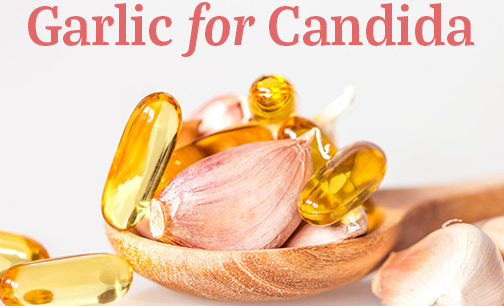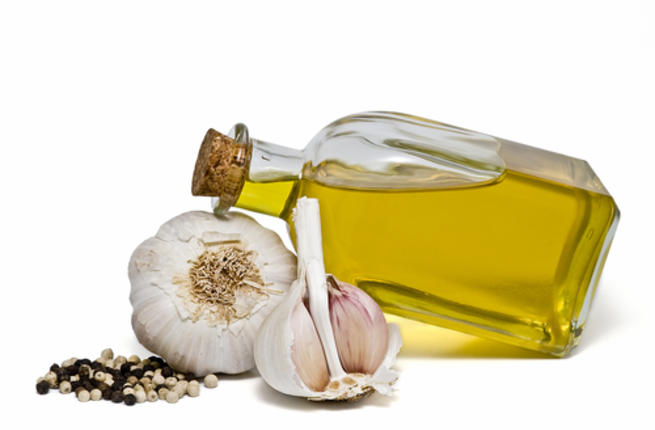
Small intestinal fungal overgrowth (SIFO) is a condition characterized by an excessive population of fungal microorganisms (Candida albicans) inhabiting the small intestine (SI).1 SIFO can exhibit a wide array of symptoms to include diarrhea (leading to nutrient insufficiencies), gas, belching, bloating, and indigestion.1(1) Furthermore, more severe complications of Candida albicans can lead to death.2 Thus, it is imperative to implement nutritional strategies which down-regulate the proliferation of such species. One particular nutritional intervention is the use of garlic. As such, the following will explore Candida albicans in greater detail, and research using garlic and its derivatives as a natural intervention in treating fungal overgrowth.
As mentioned in the introduction, Candida albicans has the potential to induce severe stress upon homeostasis to include death; a result of uncontrolled proliferation of fungal overgrowth known as candidiasis.2(1) Furthermore, said condition has accounted for a mortality rate of 40% despite the presence and application of anti-fungal drugs.2(1) Candida albicans, as defined by Li et al2(1) is an opportunistic pathogen of humans as well as an endogenous constituent of the human microbiota. Within the last 20 years, infections caused by Candida albicans have increased in a significant fashion and its ability to grow either as unicellular budding yeast or in filamentous form is a unique characteristic.2(1) Furthermore, Candida albicans has the capacity to infiltrate medical implants, such as urinary/blood catheters and heart valves, and frequently self-organizes into biofilms composed of a dense network of hyphae, yeasts, pseudohyphae, as well as a self-produced matrix of extracellular polymeric material.2(1)

Such qualities candidiasis behooves researchers to seek out and develop novel and effective strategies to control the invasive nature of Candida albicans. One particular intervention is that of garlic and its derivatives. Garlic is a common food that has been widely used in traditional medicine for several millenia.2(1) Garlic oil, an extract of garlic, has been shown to have effective anti-inflammatory and antifungal properties. Furthermore, diallyl disulfide (DDS) and diallyl trisulfide (DTS) and are the most common and abundant volatile sulfur-containing compounds in garlic oil.2(1) As a means of appreciating the mechanistic action of such substances in garlic to include DDS and DTS, the following will consider experiments and research conducted by Li et al2(1) covering the same as well new knowledge surrounding the antifungal effects of garlic upon Candida albicans.

Candida albicans is a fungus that has a complex outer layer consisting of biofilms that are resistant to a myriad of anti-fungal drugs; such a unique characteristic renders conventional antifungal agents as an ineffective intervention.2(1) However, essential oils, like garlic oil, has the capacity to penetrate the plasma membrane of fungus due to their lipophilic characteristics. Furthermore, Li et al2(5), via observation, noted that some organelles, to include the mitochondria and vacuoles, were damaged in Candida albicans cells after garlic oil treatment. Infiltrating and destroying fungal mitochondria is of clinical significance since the mitochondria is the site of energy/ATP generation of a cell; if the mitochondria are destroyed, cell death ensues shortly thereafter. Furthermore, Li et al2(5) observed that garlic oil down-regulated over 200 genes responsible for the growth and proliferation of Candida albicans. Thus, garlic oil appears to not only destroys organelles of said fungus; it also has the capability to control its genesis via gene modulation.
In conclusion, SIFO and candidiasis are conditions that develop in the presence of uncontrolled fungal proliferation. Due to the resistance of fungal organisms to conventional pharmaceutical interventions, it is imperative that novel strategies are developed and implemented to mitigate the deleterious effects of SIFO and candidiasis. Ultimately, garlic and garlic oil extract could serve as a viable supportive nutraceutical intervention (as part of an integrated clinical plan) in controlling said conditions.
References
1. Lord RS, Bralley, JA. Laboratory Evaluations for Integrative and Functional Medicine. 2 nd ed. Duluth, GA: Genova Diagnostics; 2012.
2. Li WR, Shi QS, Dai HQ, et al. Antifungal activity, kinetics and molecular mechanism of action of garlic oil against Candida albicans. Sci Rep. 2016:1-9. doi:10.1038/srep22805.
-Michael McIsaac
